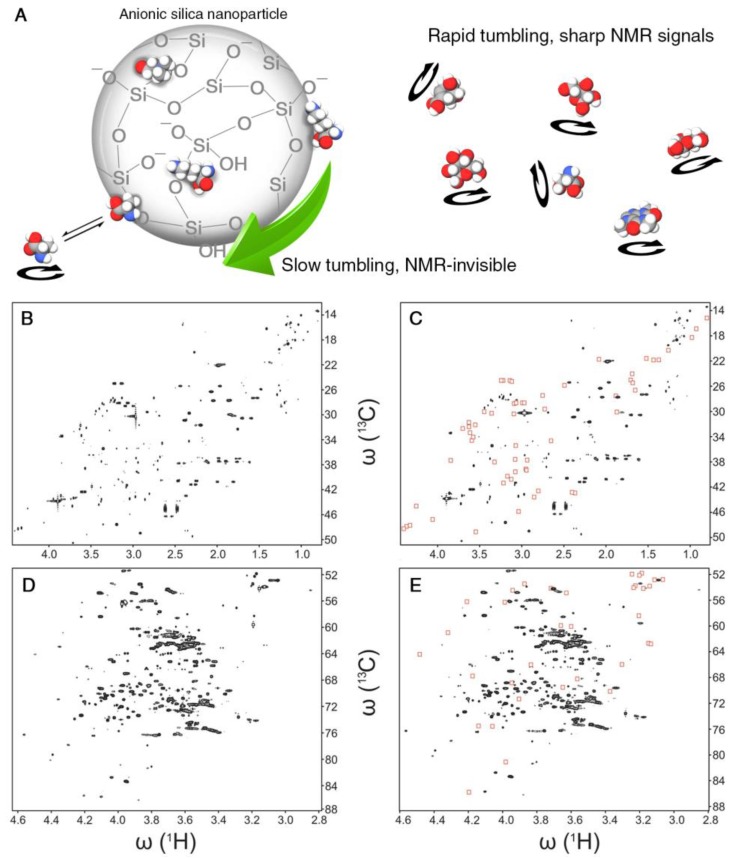Figure 3.
(A) Schematic representation of the effect of nanoparticle-metabolite interactions on differential line broadening in NMR spectra. Anionic silica nanoparticles adsorb positively-charged metabolites, slow down their tumbling rates and hence broaden and diminish the corresponding spectral peaks. Even transiently-interacting metabolites are subject to potentially strong line-broadening effects. The linewidths of non-interacting metabolites, however, are not affected. (B–E) Two representative 2D 13C-1H heteronuclear single quantum correlation (HSQC) NMR spectral regions of pooled human urine sample in the absence and presence of nanoparticles. A subset of cross-peaks (highlighted by red boxes in (C,E)) that primarily belong to positively charged metabolites is suppressed by the presence of anionic silica nanoparticles compared to the nanoparticle-free sample (B,D). Adapted with permission from [36].

